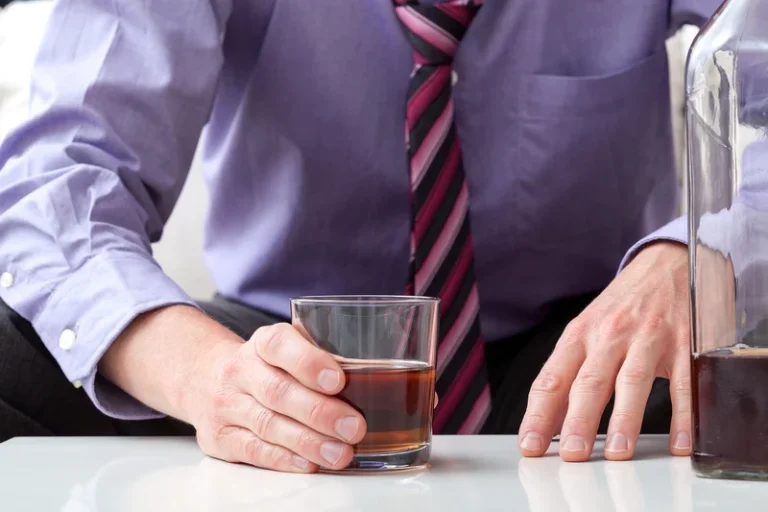
Some use trigger warnings to give students time to physically or mentally prepare for potentially distressing subject matter, such as physical or sexual violence. Trigger warnings are used in other settings, too, such as in the media. Triggers refer to the experience of having an emotional reaction to a disturbing topic (such as violence or the mention of suicide) in the media or a social setting. However, there is a difference between being triggered and being uncomfortable. At the Massachusetts Center for Addiction, we provide personalized, comprehensive treatment programs. We understand that each individual has unique needs, and we offer a variety of treatments, including partial hospitalization programs (PHPs) and intensive outpatient programs (IOPs).

Substance Abuse Triggers
Internal triggers are emotions or thoughts, whereas external triggers are something seen or heard. Well, think of them as road signs pointing toward potential relapse risks. By understanding your personal triggers, you gain invaluable insight into what may lead you down an unhealthy path again. It becomes easier then to develop strategies for overcoming these challenges and maintaining your progress in recovery.
Physical Relapse

In recent experiences, drug and alcohol abuse after practicing abstinence, heightens an individuals chances of overdosing. By creating a plan, individuals can identify their triggers and cravings, and develop strategies to manage them. They can also build up their coping skills to help them better handle difficult situations. Finally, they can reduce their risk of relapse by understanding their triggers and cravings and having a plan https://ecosoberhouse.com/ in place. Creating a relapse prevention plan is key to increasing the likelihood of long-term sobriety, as it allows for identifying and managing triggers and cravings, building up coping skills, and decreasing the risk of relapse. If a lapse or relapse occurs, the patient should be encouraged and guided by the clinician to explore the relapse itself and the circumstances surrounding it, including any early warning signs of relapse.
Resource Box 3. Relapse Prevention Tool: SOBER Brief Meditation
„An example might be a person with a substance use disorder who finds walking by a bar or smelling alcohol prompts cravings and thoughts of drinking,“ he explains. Understanding and managing external triggers is a crucial part of the recovery journey. It requires vigilance, resilience, and a commitment to ongoing self-improvement. But with the right support and resources, individuals can effectively navigate these challenges and continue on their path to recovery. Professional support can be invaluable in helping individuals recognize and navigate external triggers.
The Impact of Personal Experiences
Sometimes it is impossible to avoid experiencing an emotion, change how you feel, or stop yourself from remembering a certain memory. Triggers are individualized experiences that vary widely from person-to-person. For example, a trigger may elicit a physical reaction, such as heavy breathing or sweating. These feelings internal and external triggers can be very difficult to address and quite detrimental to mental health. It requires introspection, patience, and, often, the guidance of a mental health professional. However, the effort invested in understanding and managing these triggers can be a transformative part of an individual’s recovery journey.
- It can stem from common sources like work, personal relationships, financial concerns, and self-imposed expectations.
- You probably experience nervousness, frustration, pressure, fatigue, embarrassment or boredom from time to time in your everyday life.
- When it comes down to situations, everyone handles adversity differently.
- Immersing yourself in this supportive community will help you recognize that you’re not alone and give you the opportunity to work through your triggers so that you set yourself up for a lifelong recovery.
- What happens to the recovering cocaine addict who suffers from reoccurring internal triggers?
- As part of relapse prevention it is critical to educate patients about the danger of unintentional overdose after a period of staying clean.
People Who Influence Cravings
Emotional turmoil is a set of intense emotions such as sadness, depression, and anger, which can be a trigger for an emotional relapse. On the other hand, someone may experience cravings while feeling low or sad. Negative emotions like sadness, depression, guilt, loneliness, and anger can all be potential triggers for relapse. It’s crucial to address these negative feelings to prevent an emotional relapse.
Identifying triggers
Drugs or alcohol can interfere with appetite regulation, causing imbalances in eating habits. The earlier people in recovery can identify and successfully respond to triggers, the greater their chances of prolonged abstinence. Mental relapse, or relapse justification, is the continuous fight between wanting to use and knowing you should not use. Individuals often underestimate the dangers of situations and fall into the trap of single-time use. They give themselves permission to use substances in a controlled way, but the frequency of use generally increases until they fully relapse.
- Cravings come and go, so if you don’t know where to buy drugs, you will be over the craving long before you think of a way to find a drug connection again.
- It requires vigilance, resilience, and a commitment to ongoing self-improvement.
- If you do relapse because of your triggers, using substances can be deadly.
- Therefore, if you’re in a drug and alcohol recovery stage, this environment can inspire you to feel celebratory and want to participate.
Tips to Dealing with Triggers in Recovery
Learning to cope with external triggers involves developing strategies to avoid or deal with these triggering situations. This might involve steering clear of specific locations or individuals that could trigger a relapse. Alternatively, it might require using strategies such as diverting your attention, reaching out for help, or engaging in mindfulness exercises when confronted with a potential trigger. Recognizing and managing triggers is crucial for anyone navigating the recovery process from addiction. Internal and external triggers can dramatically impact one’s journey toward sobriety. Here we delve into detailed examples of each, providing a comprehensive look at the triggers you might face and strategies for managing them.

Ways of Dealing with Triggers in Recovery
Researchers followed the cocaine use patterns of stressed and unstressed rats and used a low dose of cocaine as a trigger. The stressed rats’ responses to the trigger mirrored those of people during relapse. While holidays are a time of celebration for some, they may be a struggle for people in recovery. Family and friends often tempt those in recovery to consume alcohol because they are under the misconception that one deviation from the treatment plan will not be detrimental. People at risk of a relapse should avoid stressful situations that are likely to push them to use drugs and alcohol.